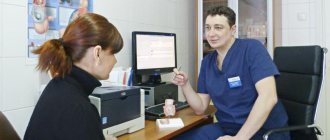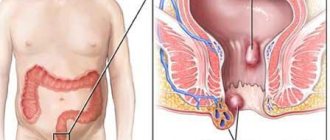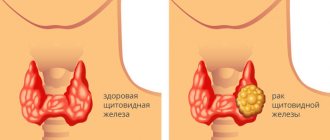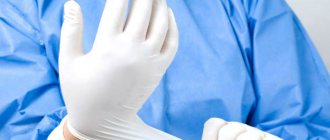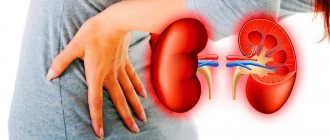What are hemorrhoids
Hemorrhoids (from the Greek haima - “blood”, roe - “flow”) are one of the most common diseases in proctology, which is based on the pathological condition of the cavernous plexuses of the rectum, accompanied by stagnation of blood in them. Hemorrhoids are manifested by periodic bleeding from the nodes, their prolapse from the anal canal and frequent inflammation. Men and women are equally susceptible to hemorrhoids
Classification of hemorrhoids
Internal hemorrhoids. With internal hemorrhoids, there are varicose hemorrhoidal veins, which are located deep in the anal canal, so such hemorrhoids are not visible during a normal examination. In order to see them, you have to resort to special research methods: anoscopy, rectoscopy. Also, such nodes can be identified during digital rectal examination. Such a sign of the disease as prolapse of hemorrhoids can cause bleeding when they are injured during the act of defecation. With significant weakness of the ligamentous apparatus of the rectum, such nodes fall out during defecation or significant straining. In addition, the internal nodes, when they fall out and spasm of the anal sphincter, can be infringed. Most often, the first signs of internal hemorrhoids are bleeding.
External hemorrhoids. In this type of hemorrhoid, the hemorrhoids are marked externally and should not be confused with prolapsed internal hemorrhoids. Most often, external nodes manifest as thrombosis. As a rule, bleeding from external nodes does not occur, since they are not injured during defecation. Such hemorrhoids hurt and cause discomfort during bowel movements. But constant stagnation of blood in them can lead to the formation of blood clots in them. Externally, the external hemorrhoidal node can be of different sizes, from 3 mm or more, which depends on its blood supply. An external hemorrhoid is usually covered by skin, while a prolapsed internal hemorrhoid is usually covered by the mucous membrane of the anal canal.
Combined hemorrhoids. As the name implies, with combined hemorrhoids, the patient has a combination of external and internal hemorrhoids.
The occurrence of hemorrhoids
Normally, all people have external and internal hemorrhoidal venous plexuses under the mucous membrane of the anal canal, which are similar in structure to the cavernous tissue of the genital organs. They play a significant role in retaining intestinal contents, ensuring complete closure of the anal canal when they are filled with blood. As a result of the influence of a number of factors, most adults experience an increase in hemorrhoidal nodes, and hemorrhoids begin to develop.
Factors influencing the development of hemorrhoids: constipation, straining; pregnancy, childbirth; hereditary factors; sedentary lifestyle; prolonged standing or sitting; excessive physical activity; practicing some sports (horse riding, cycling, weightlifting); lifting weights; overweight; hot, spicy food; drinking alcohol; prolonged exposure to heat (sauna, hot bath); prolonged diarrhea (diarrhea).
Symptoms of hemorrhoids in men and women
A person who develops hemorrhoids may initially experience a feeling of discomfort in the anus from time to time, which in most cases is the main signal of the development of hemorrhoids.
Later, other symptoms of the disease appear.
Sensation of a foreign body in the anus, hemorrhoids heaviness and inflammation. These manifestations may be one of the first symptoms of hemorrhoids. They arise due to swelling and displacement of the internal folds of the anal canal. They may not bother you all the time, but only at certain times.
Anal itching and burning. Such unpleasant symptoms of hemorrhoids arise as a result of prolapse of hemorrhoids, as well as the release of blood and mucus, which irritates the mucous membrane and skin in the anus area. Chronic hemorrhoids cause itching during bowel movements.
Bleeding. This is the most typical symptom of hemorrhoids. Bleeding is periodic and can also vary in duration and color. In most cases, they occur during bowel movements, but it is possible that they may occur in the intermediate period. Blood may be released in the form of droplets after the stool is passed, and may also be present in the stool itself. Depending on the severity of the bleeding, blood can leave marks ranging from small marks on toilet paper to large splatters on the toilet.
Prolapse of hemorrhoids. Hemorrhoids are dilated veins of the choroid plexuses of the rectum. Their loss is one of the most characteristic symptoms of hemorrhoids. There is a direct relationship between this symptom of hemorrhoids and the stage of the disease. At the initial stage, the fallen nodes are easily set inward on their own, and at later stages they are set only as a result of manual intervention, or are not set at all.
Pain. As a result of the progressive development of hemorrhoids and strangulation of hemorrhoids, pain is a common symptom of the disease. They can occur during bowel movements, while walking, while sitting, and can also be permanent. Often the pain intensifies with exacerbation of hemorrhoids.
If you have hemorrhoids and you have a question about which doctor to see, then the answer is simple - you should make an appointment with a proctologist.
Increasing the amount of dietary fiber and fluid in your diet will help reduce symptoms. Good sources of dietary fiber include bread and bran products, fruits and vegetables. Reducing the force and duration of straining during bowel movements will reduce the pressure on hemorrhoids and prevent their prolapse.
Course and manifestation of hemorrhoids
Hemorrhoids are usually characterized by a periodic course, that is, periods of exacerbation and remission.
The listed symptoms and signs of hemorrhoids most often bother patients during the development of the disease and are serious signals for taking emergency measures.
Hemorrhoids, like many other diseases, are much easier to cure in the initial stages of the disease, otherwise the patient will face surgical intervention and a long course of treatment. If nothing is done against hemorrhoids in time, the disease may be accompanied by the occurrence of other diseases against its background, such as chronic and acute anal fissure, anemia, rectal fistula, thrombosis, ulcers around the rectum, and weakened ability to retain gases.
In advanced cases, complications of acute hemorrhoids may develop, such as massive bleeding, swelling of the anus, purulent paraproctitis (purulent inflammation of the tissue), necrosis (death) of hemorrhoidal tissue.
The dangerous consequences of hemorrhoids are polyps and malignant tumors of the intestine, which have symptoms similar to hemorrhoids. Pain and bleeding during bowel movements can be a manifestation of rectal pathologies such as polyps or cancer.
Stages of hemorrhoids
| Stages | Symptoms | Clinical picture |
| 1 | Bleeding, discomfort | Hemorrhoids do not protrude from the anal canal. The vascular pattern of the mucous membrane is enhanced |
| 2 | Bleeding, prolapse of nodes, itching, mucous discharge | Hemorrhoids prolapse during bowel movements and then reset on their own |
| 3 | Bleeding, prolapse of nodes, anal itching, mucous discharge | Hemorrhoids fall out not only during defecation, but also during physical stress and are manually adjusted by the patient |
| 4 | Bleeding, constant prolapse of nodes, anal itching, sphincter incontinence, pain syndrome | Constant prolapse of hemorrhoids, with the impossibility of their reduction |
Do you doubt your health?
Make an appointment with a proctologist and get rid of your worries. We have discounts until the end of April. To find out the price, click “register online” and select a clinic. Registration online
Causes
The root cause of hemorrhoids is a violation of the inflow and outflow of blood in the cavernous bodies of the rectum. Normally, the corpora cavernosa (also called cavernous bodies) help control the urge to defecate: when filled with blood, they “swell” and help retain feces in the intestines, and after a successful bowel movement, blood flows out and the corpora cavernosa shrink.
If the inflow/outflow regulation is disrupted and the corpora cavernosa have been engorged with blood for a long time, this causes the vascular walls to dilate and thin, making them much more susceptible to rupture or erosive lesions, which in turn cause inflammation and can lead to blood clots.
Factors that provoke venous stagnation
The following predisposing factors can provoke long-term venous congestion in the corpora cavernosa:
- Physical inactivity.
A low level of physical activity (due to sedentary work or simple laziness) causes extensive disturbances of venous blood flow throughout the body - and in the rectum in particular.
- High loads.
Ultra-high physical activity associated with lifting weights causes excessive tension in the abdominal muscles and rectal area, which also leads to disturbances in the venous blood flow.
- Chronic constipation.
The presence of feces in the rectum causes a constant, permanent filling of the cavernous bodies with blood, as mentioned above.
- Venous pathologies.
Impaired blood flow in hemorrhoidal veins can be caused by various vascular diseases.
- Oncology.
Tumor formations in the rectum cause disturbances in the inflow/outflow of blood due to mechanical compression of the venous vessels or their deformation due to tumor growth (in later stages).
- Diarrhea.
Severe diarrhea, especially caused by poisoning or infectious diseases, causes congestion of the venous system of the rectum, which leads to dilation of blood vessels or even micro-ruptures, followed by an inflammatory process.
- Pregnancy and childbirth.
Bearing and giving birth to a child is often accompanied by multiple disturbances in the pelvic venous circulation system, which can (but not necessarily) lead to the appearance of hemorrhoids.
- Obesity.
The presence of excess weight, by analogy with physical inactivity, also leads to multiple disturbances of venous blood flow.
- Bad habits.
Chronic alcohol abuse or long-term tobacco smoking provokes varicose veins, which primarily affects the pelvic region and lower extremities.
- Heredity.
Low hereditary elasticity of the venous vessels of the rectal area creates a predisposition to hemorrhoidal disorders - although it is not considered as their direct cause.
Diagnosis of hemorrhoids
An examination by a coloproctologist involves complex procedures, among which it is worth noting an examination of the rectum. Upon examination, external hemorrhoids can be identified, and by carefully spreading the edges of the external anal sphincter, internal nodes can be identified. Using a digital rectal examination, which should be carried out in all cases, except those when there is an exacerbation of the process, it is possible to establish the presence of compacted hemorrhoids, the tone of the anal sphincter, and identify concomitant diseases of the rectum. To establish that hemorrhoids have come out, the patient is asked to strain. The doctor must also perform a sigmoidoscopy. A thorough examination of the patient allows us to exclude anal fissure, paraproctitis, polyps and rectal cancer.
How to deal with the disease at different stages
The expansion of hemorrhoidal veins requires an immediate response already at the initial stage of its development. In this case, it is necessary to clearly establish why hemorrhoids occurred in a particular situation, and try to reduce the negative influence of factors to a minimum. In addition, it is important to begin eliminating the consequences of changes as early as possible in accordance with the stage of the disease:
- At the first stage of hemorrhoids, drug treatment with topical drugs with anti-inflammatory, regenerating, analgesic and venotonic effects is recommended. Sclerosis of hemorrhoidal veins can also be used. Patients are also advised to follow a diet and increase physical activity.
- The second stage of hemorrhoids involves the same treatment as in the first stage, but with the use of oral medications (local ones are also included in the treatment regimen). In addition, radical methods for eliminating hemorrhoids are used: sclerotherapy, ligation, laser removal of nodes, cryotherapy or coagulation of nodes.
- The third stage of hemorrhoids requires more radical measures, and therefore conservative therapy gives way to surgical treatment - hemorrhoidectomy and vein disarterization and the use of various technologies (laser, radio waves). Latex ligation of nodes is also used at this stage.
- The fourth stage of hemorrhoids is complicated by complete prolapse of the nodes and a high probability of thrombosis and heavy bleeding. Effective methods of treating hemorrhoids at this stage are laser coagulation and hemorrhoidectomy (laser or radio wave). For vein thrombosis, thrombectomy is performed. Conservative therapy for this degree of disease is ineffective.
Regardless of what stage of hemorrhoids occurs, in parallel with the methods described above, it is necessary to apply preventive measures. They are most often aimed at eliminating the causes of hemorrhoids. This allows you to lengthen the relapse-free period and avoid further progression of the disease.
Acute form
The period of exacerbation of the disease is characterized by the manifestation of symptoms in their most vivid embodiment: if there is pain, then the most severe, the itching is unbearable. Temperature may increase if treatment is not started promptly. The slightest movement causes sharp, unbearable pain in the patient. Walking, sitting, any movement from place to place brings discomfort, and what pain does defecation bring! This process simply makes a person fall into despair and panic. All hemorrhoidal cones become so inflamed that it is even impossible to touch them. External self-examination may detect a change in the color of the nodes; they may acquire a bluish tint. Tension and swelling of the nodes are an obligatory factor in the acute period of the disease. If an infection gets into the tissue of a node or blood clot, this can trigger the appearance of a high temperature, which indicates the beginning of the inflammatory process. The acute form can become one of the links in chronic hemorrhoids. The disease, which occurs in a relatively calm stage, can become acute under the influence of certain factors. Prolonged sitting or standing, lifting weights, changes in the normal process of bowel movements (constipation or diarrhea), abuse of alcohol or foods with a spicy, pungent and salty “tint” - all this can cause an acute course of the disease. Treatment should begin immediately, without giving hemorrhoids the slightest chance to take over the patient completely.
Reviews from patients about the operation
We analyzed patient reviews about the rehabilitation period after hemorrhoid removal. The analysis showed that the severity of pain, difficulty with defecation and bleeding after surgery depends on the size and number of nodes removed.
Patients who have consulted a doctor with a single small node speak of surgical intervention as a completely tolerable procedure, with a short rehabilitation period.
When it comes to several large nodes, treatment will be lengthy. If the doctor recommends a minimally invasive method, you will have to remove one node per week, so the healing process will take several weeks. A surgical operation will remove all pathological elements at once, but in this case the rehabilitation period may also take several weeks.
Therefore, we recommend that you consult a doctor in a timely manner in order to intervene at an early stage of the disease. Additional information about preparing for surgery and rules of behavior during the rehabilitation period can be read in the article “Treatment of hemorrhoids in men.”
Clinical prognosis
The overall clinical prognosis is always favorable. Modern proctological methods make it possible to successfully treat internal hemorrhoids even at the most advanced stages.
The disease can pose a threat to life only if the hemorrhoids become necrotized with the addition of blood poisoning, but this is only possible in the case of a long, persistent and conscious refusal of the patient to receive medical care.
Surgeon-coloproctologist, surgeon of the highest category. Rakhmatullin Andrey Albertovich
